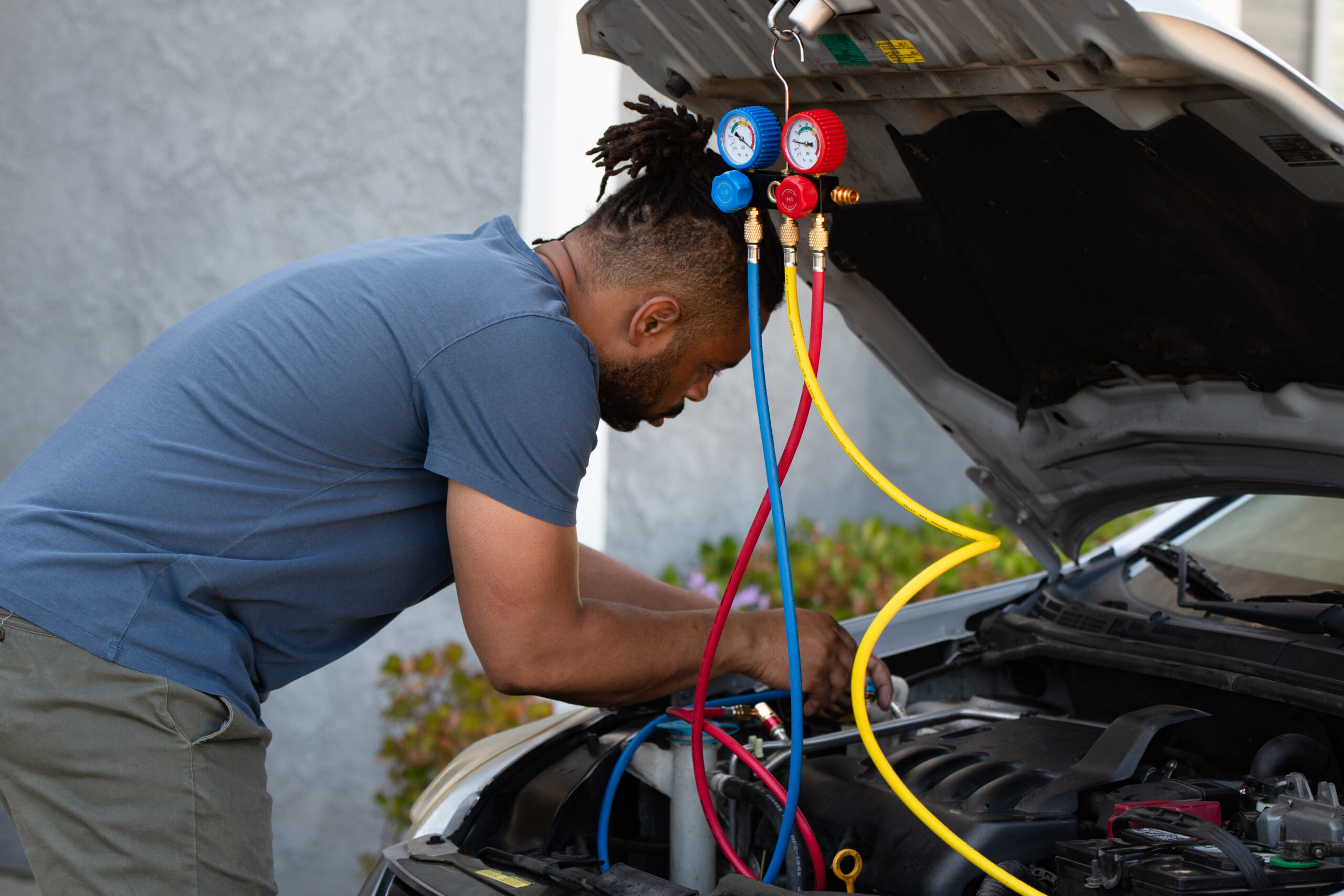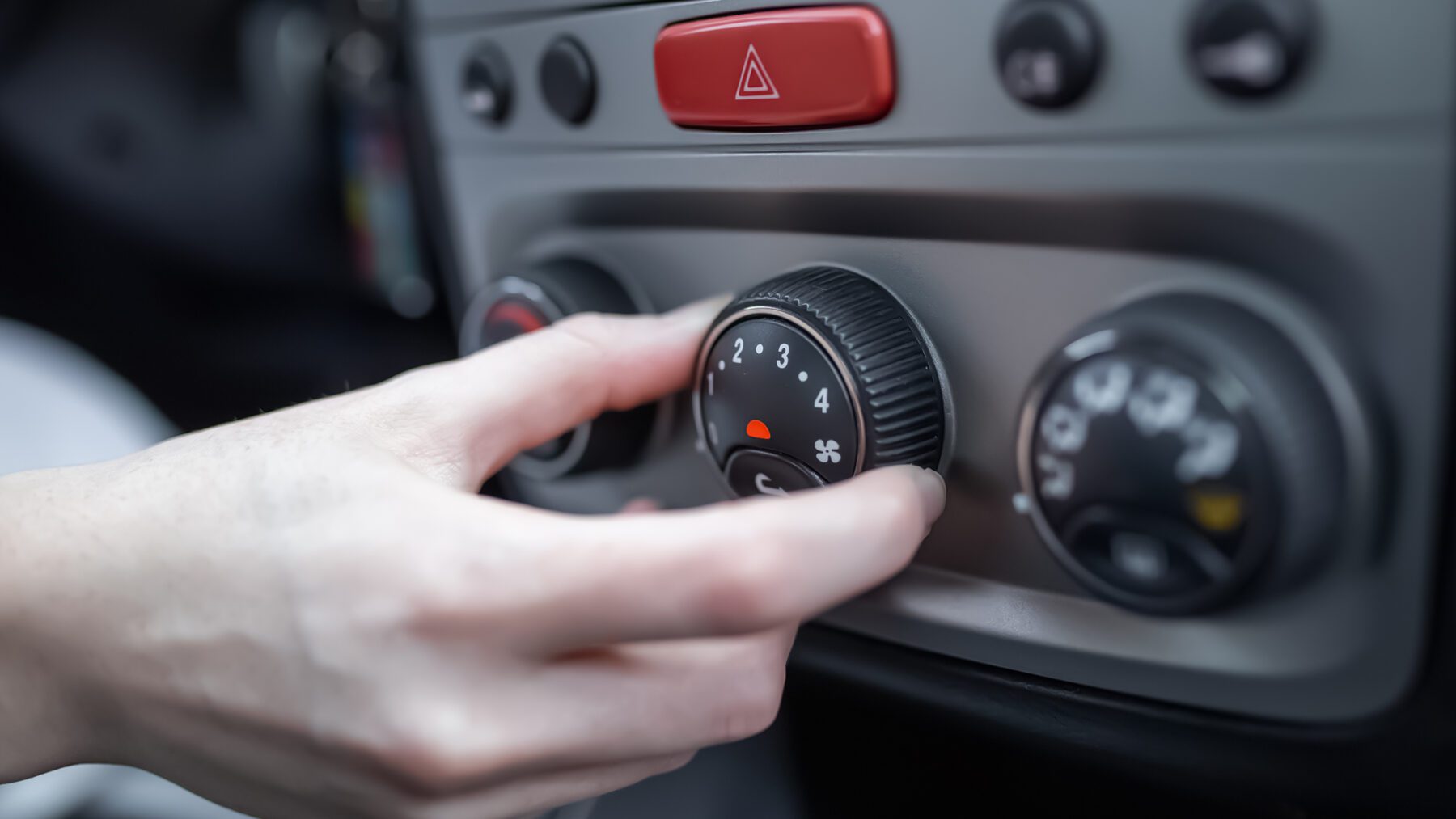
AC Car Blowing Hot Air? Here’s How to Fix It. When you step into your car on a sweltering day expecting a blast of cool air, it can be incredibly frustrating to be met instead with warmth. Many drivers have faced the issue of AC Car Blowing Hot Air, and while it might seem like a complex problem, there are several steps you can take to troubleshoot and even fix it on your own. This article explores common causes, simple diagnostic tips, and practical repair methods—all in a friendly, easy-to-understand manner.
AC Car Blowing Hot Air: Understanding the Issue
Before diving into potential fixes, it’s important to grasp what’s happening when your vehicle’s AC system isn’t performing as it should. When your AC Car Blowing Hot Air instead of cool air, it indicates that the cooling cycle is being interrupted or isn’t operating correctly. This can result from issues ranging from low refrigerant levels to mechanical failures or even sensor malfunctions. Recognizing the problem’s nature helps you narrow down the cause and decide whether a DIY approach is feasible or if it’s time to consult a professional.
In many cases, the problem lies in one of a few key areas. A lack of refrigerant can mean that there isn’t enough coolant to absorb the heat inside your car. Alternatively, problems with the compressor or a malfunctioning condenser may be the culprit. Even electrical issues, such as faulty sensors or wiring problems, can trigger this issue. By understanding the basics of your car’s AC system, you’re better equipped to tackle the challenge head-on.
AC Car Blowing Hot Air: Common Causes
There are several reasons why your car might start blowing hot air instead of delivering a cool breeze. Here are some of the most common causes:
- Low Refrigerant Levels: One of the primary reasons for AC Car Blowing Hot Air is a refrigerant leak. Over time, leaks can occur in hoses, seals, or connections, leading to reduced refrigerant and inefficient cooling. (Read More: AC Car Freon: Signs Your Vehicle Needs a Recharge).
- Faulty Compressor: The compressor is essential for pressurizing and circulating the refrigerant. If it fails or malfunctions, the cooling cycle is compromised.
- Clogged Condenser: The condenser helps dissipate heat. If it’s blocked by debris or dirt, the heat won’t be effectively released, resulting in warmer air.
- Electrical Issues: Problems such as blown fuses, malfunctioning sensors, or issues with the control unit can prevent the AC system from operating correctly.
- Worn Out AC Components: Over time, components like the expansion valve or evaporator can wear down, reducing the system’s ability to cool the air effectively.
Understanding these causes is the first step in diagnosing why your AC Car Blowing Hot Air and determining the best course of action for repair.
AC Car Blowing Hot Air: Checking Refrigerant Levels
One of the easiest checks you can perform when dealing with AC Car Blowing Hot Air is inspecting the refrigerant level. Many car owners assume the problem is more complicated than it really is, but often a simple low-refrigerant condition is the root cause. Here’s how to get started:
- Locate the AC Service Ports: Your car’s AC system typically has low- and high-pressure ports. The low-pressure port is usually easier to access and is where you’ll check the refrigerant level.
- Use a Gauge: Attach an AC gauge to the low-pressure port to read the current pressure. Consult your car’s manual to understand the ideal pressure range for your system.
- Look for Signs of Leakage: If you suspect a leak, inspect the hoses, connections, and seals for any signs of damage or oil residue, which can be a telltale sign of refrigerant leakage.
- Refill If Necessary: If the refrigerant level is low, you may need to add more refrigerant. Be sure to use the type specified in your car’s manual, and follow all safety guidelines. Overcharging can be just as problematic as undercharging.
These steps can often resolve the issue of AC Car Blowing Hot Air if low refrigerant is indeed the problem. However, if the pressure appears normal, you might need to investigate further. (Read More: Top 10 Must-Have Car Accessories of 2024 for Every Road Trip Enthusiast).
AC Car Blowing Hot Air: Inspecting the Compressor and Condenser

If your refrigerant levels are in check, the next step is to inspect the compressor and condenser, as these components play critical roles in the AC system’s functionality.
- Compressor Check: The compressor pressurizes the refrigerant, allowing it to circulate through the system. Listen for any unusual noises, such as grinding or squealing, when the AC is turned on. These sounds could indicate that the compressor is failing.
- Condenser Examination: The condenser’s role is to dissipate heat from the refrigerant. If it’s clogged with dirt, leaves, or other debris, the heat exchange process is hindered. Carefully inspect the front of your car where the condenser is typically located. Cleaning it gently with a hose can sometimes resolve minor blockages. (Read More: Car Tire Alignment Cost: Tips to Save Money and Extend Tire Life).
- Belt Inspection: Don’t overlook the compressor belt. A worn or loose belt can reduce the compressor’s efficiency. Check for any signs of fraying or damage, and replace it if necessary.
Taking the time to examine these components can often help you pinpoint why your AC Car Blowing Hot Air. Sometimes, the fix can be as simple as cleaning out a blockage or tightening a loose connection.
AC Car Blowing Hot Air: Troubleshooting Electrical and Sensor Issues
Modern car AC systems are heavily reliant on electronic components to manage temperature regulation. Faulty sensors or wiring issues can lead to the system misinterpreting data, which in turn might cause your AC Car Blowing Hot Air. Here’s what to look for:
- Sensor Functionality: The AC system relies on sensors to detect temperature and pressure levels. If these sensors malfunction, they can send incorrect information to the control module, causing the system to work improperly.
- Fuse and Relay Check: A blown fuse or a faulty relay can disrupt the electrical circuit of the AC system. Inspect the fuse box for any blown fuses related to the AC system, and replace them as needed.
- Wiring Inspection: Look for any signs of frayed or corroded wires. Electrical connections can degrade over time due to exposure to heat, moisture, and road debris. Ensuring that all connections are secure and free from damage is key to resolving issues where your AC Car Blowing Hot Air.
- Control Module Diagnostics: Some vehicles have an onboard diagnostic system that can help pinpoint electrical issues. Using an OBD-II scanner can reveal error codes related to the AC system, which may guide you toward the problem area.
Addressing electrical issues might require a bit more technical know-how, but these checks are essential if the refrigerant, compressor, and condenser all appear to be functioning properly.
AC Car Blowing Hot Air: Maintenance and Preventative Tips
Prevention is always better than a sudden breakdown, and maintaining your car’s AC system can help prevent the problem of AC Car Blowing Hot Air from occurring in the first place. Here are some tips to keep your AC system in top condition:
- Regular Inspections: Schedule routine inspections of your AC system, especially before the hot summer months. Regular maintenance can help catch minor issues before they turn into major problems.
- Keep It Clean: Ensure that the condenser is free of debris by cleaning it regularly. This will help maintain efficient heat dissipation.
- Monitor Refrigerant Levels: Even if there are no apparent issues, periodically check the refrigerant levels. Early detection of a slow leak can save you from a complete breakdown on a hot day.
- Replace Worn Parts: Over time, components such as belts, hoses, and seals can degrade. Replacing these parts on a regular schedule can prevent unexpected failures.
- Professional Servicing: While DIY maintenance is valuable, having your system serviced by a professional once a year can ensure that all components are functioning as they should. They can perform tests that might be beyond the scope of a DIY fix.
Implementing these preventative measures can significantly reduce the likelihood of encountering issues where your AC Car Blowing Hot Air becomes a recurring problem.
AC Car Blowing Hot Air: DIY Fixes and Step-by-Step Solutions

For those who enjoy a hands-on approach, there are several DIY fixes you can attempt when faced with AC Car Blowing Hot Air. Here’s a step-by-step guide to some common fixes:
- Check and Refill Refrigerant:
- Locate the low-pressure service port.
- Attach a gauge to monitor the pressure.
- Add the appropriate type of refrigerant if levels are low.
- Monitor the system for any signs of leakage after the refill.
- Clean the Condenser:
- Park your car in a safe location and allow the engine to cool.
- Use a garden hose to gently spray the condenser, removing any dust or debris.
- Inspect the fins for any bending or blockage that might impede airflow.
- Inspect and Replace the Compressor Belt:
- Open the hood and locate the AC compressor.
- Check the belt for any signs of wear, cracks, or looseness.
- Replace the belt if necessary, ensuring it is properly tensioned.
- Examine Fuses and Relays:
- Locate the fuse box and check for any blown fuses associated with the AC system.
- Replace any faulty fuses and test the system.
- If a relay is suspected, consult your car’s manual for its location and test or replace it as needed.
- Test Electrical Connections:
- Carefully inspect the wiring around the AC system for any visible damage.
- Secure any loose connections and clean any corroded terminals.
- Use an OBD-II scanner, if available, to check for error codes that might indicate electrical issues.
Following these steps can often help resolve minor issues that cause your AC Car Blowing Hot Air. Each step is designed to isolate and correct the problem so that you can enjoy a cool ride even on the hottest days.
AC Car Blowing Hot Air: When to Seek Professional Assistance

While DIY fixes can address many common issues, there are times when the problem might be too complex or hazardous to handle on your own. If you’ve gone through the troubleshooting steps and your AC Car Blowing Hot Air persists, it may be time to consult with a professional mechanic. Issues such as a failing compressor, deep-seated electrical problems, or complex sensor malfunctions require specialized tools and expertise.
A professional can perform a comprehensive diagnostic, ensuring that all components of the AC system are thoroughly inspected. They can identify problems that might not be immediately apparent to the untrained eye, such as intermittent electrical faults or subtle refrigerant leaks. Additionally, if your vehicle is still under warranty, professional repairs might be covered, saving you both time and money in the long run.
Visiting a trusted repair shop not only provides peace of mind but also ensures that your car’s AC system is restored to optimal performance. With professional help, you can avoid potential risks associated with incorrect DIY repairs and ensure that the system operates safely and efficiently.
Maintaining your vehicle’s comfort on the road is essential, especially during extreme weather conditions. Addressing issues promptly can make a significant difference in your overall driving experience, keeping you cool and comfortable throughout your journeys.
By following these steps and guidelines, you can confidently tackle the issues that lead to your AC Car Blowing Hot Air. Each troubleshooting phase—from checking refrigerant levels to inspecting the compressor and electrical components—empowers you to take control of your car’s cooling system. Whether you choose to fix the problem yourself or enlist the help of a professional, the key is understanding the underlying causes and addressing them methodically.




